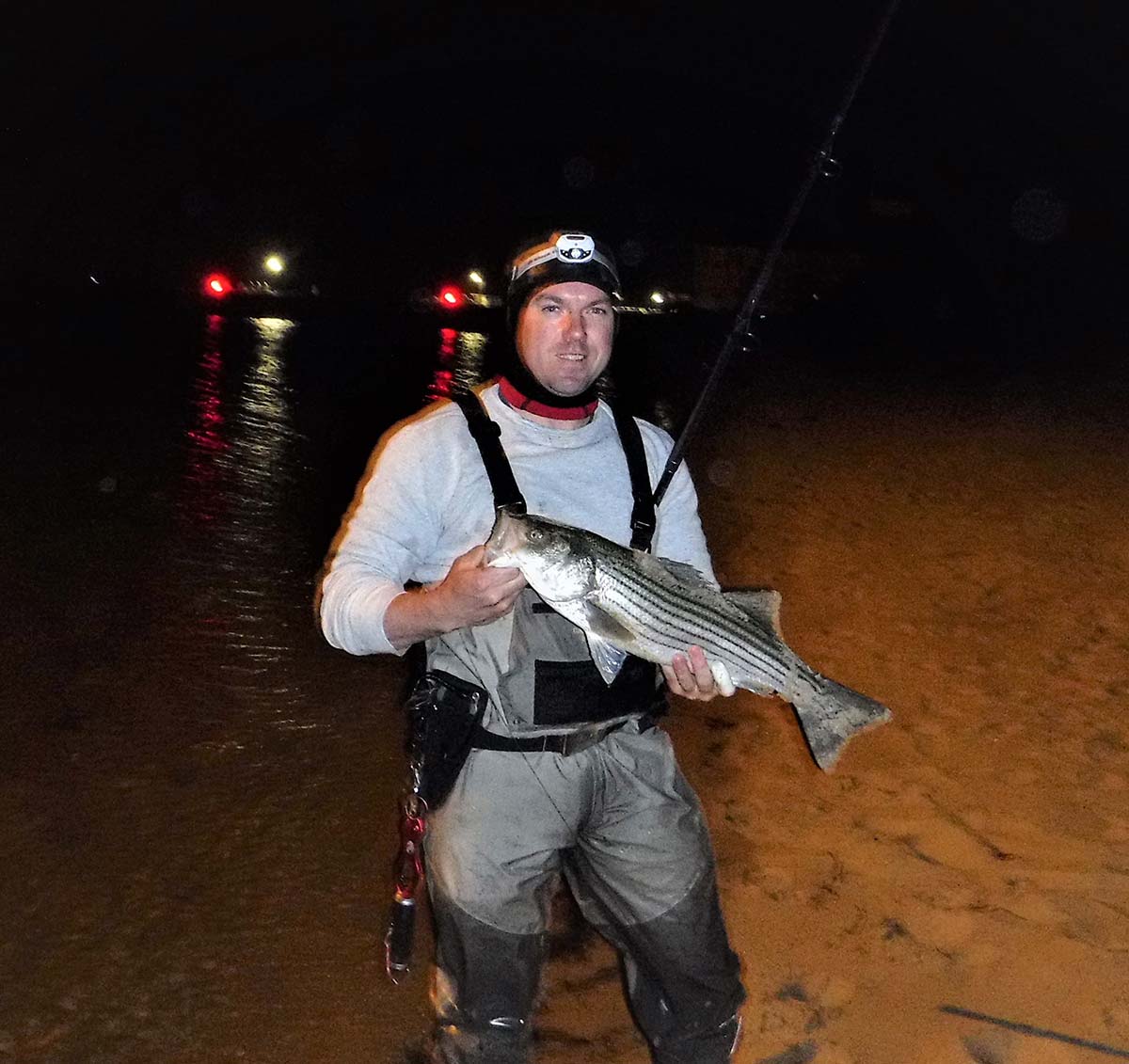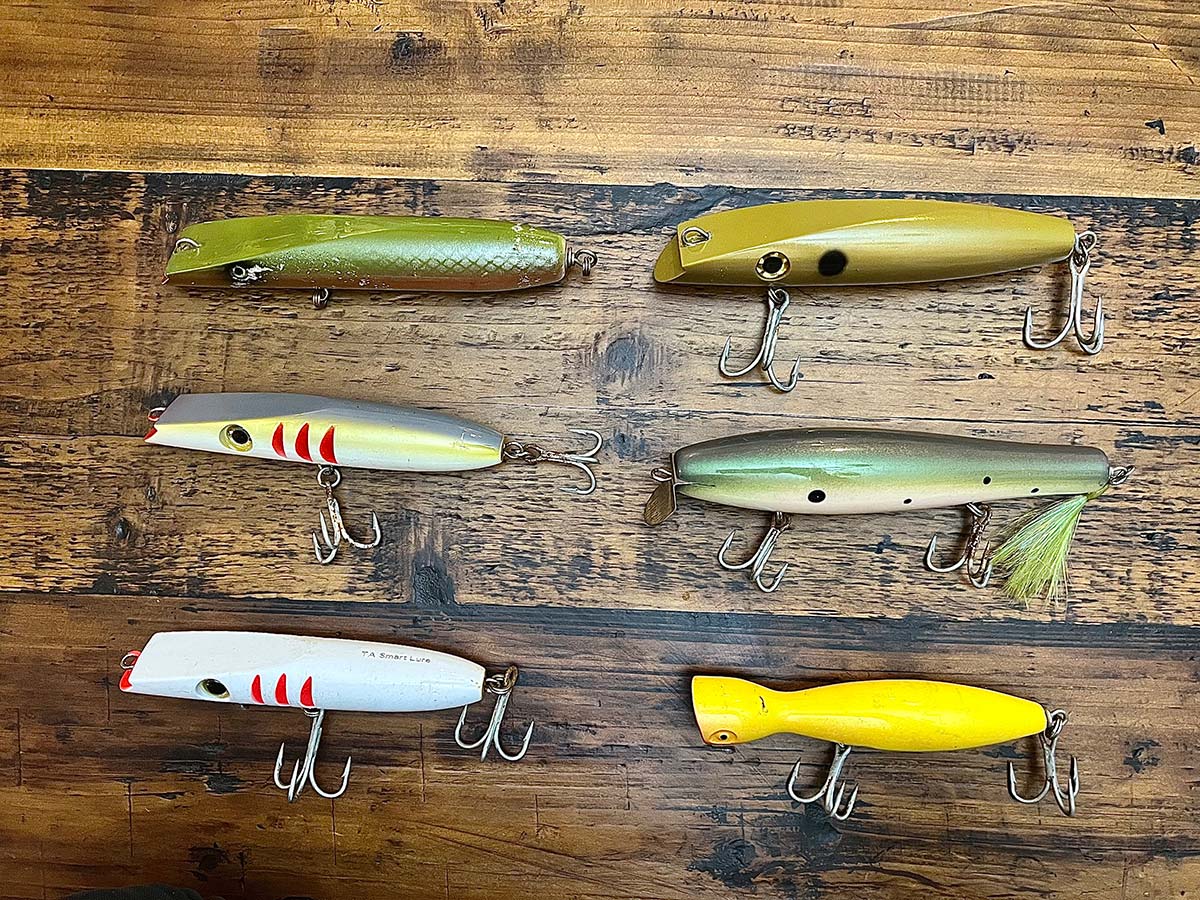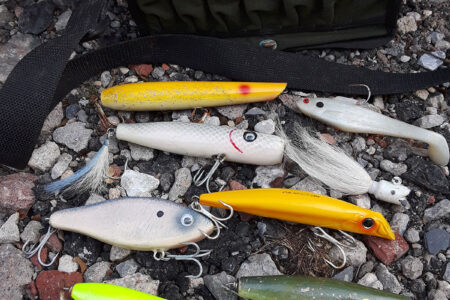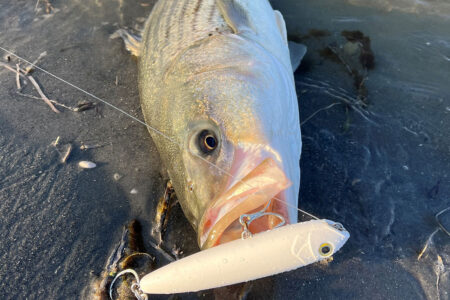
Bridges provide ambush opportunities that are just too good for stripers to pass up.
As I looked out across the bay, I could see fish feeding in the shadow line created by the lights on the bridge above. As my first cast landed and my darter dug into the current, it wasn’t long before my retrieve was interrupted by a sharp bump. After a spirited fight, the 16-pound bass was landed and safely released.
I had been hearing about the productive fishing along the shadows of bridges for a long time, but was unable to find consistent success initially. It would take several trips, fishing different conditions and tides before I would finally started to figure it out.
Benefits & Drawbacks
Bridges offer fishermen access to some very productive water that checks a lot of boxes in terms of attracting striped bass. You’ll usually find strong currents, shallow water transitioning to deep water and an array of baitfish species. Additionally, bridges provide bass with protection from larger predators as well as a great location to ambush and feed on smaller prey items. As opposed to an inlet or channel where bass generally feed toward the bottom of the water column, bridges give the bass a reason to feed throughout the entire water column, thanks to their structure and shadow lines. The bridge pilings disrupt the current setting up holding opportunities and the shadow lines set up visual boundaries where the bass can ambush unsuspecting prey.
On the flipside, while bridges provide some excellent fishing opportunities, they also present surfcasters with some of the most difficult conditions you will find in the surf. If you spend enough time fishing around bridges, you’ll undoubtedly lose some plugs snagging the bridge pilings or the rocky structure below. Additionally, hooked bass have a tendency to run directly past or through a set of bridge pilings, oftentimes resulting in the bridge cutting your line. Surfcasters need to be ready to stop any fish in their tracks with heavy gear.
Armed For Battle
Fishing the shorelines adjacent to bridges requires some stout tackle to turn a bass and keep them from breaking off. I prefer an 11-foot medium heavy to heavy powered rod with a moderate fast to fast action. As for reels, you’ll want one with a strong drag, that will most likely be locked tight to keep a bass from running straight to the bridge once hooked.
My primary setup consists of an 11-foot medium heavy Lamiglas Super Surf 2g paired with a Van Staal VSX 275. My reel is spooled with 50-pound Power Pro or Spiderwire. My leader consists of a size 2 Spro power swivel, 36 to 42 inches of 80-pound fluorocarbon and a 175-pound Tactical Anglers power clip, although some plugs I will tie direct.

The Presentation
The most productive technique that I have found when fishing bridge shorelines is to fish the bridge shadow line parallel to the bridge itself. Your goal should be to fish your plug right on the shadow line as long as possible during your retrieve. Like most types of surfcasting your current speed will play a big part in your ability to effectively present your lure. When the current is slower I’ll position myself just up current of the shadow line. As the current speed increases I’ll re-position myself further up current, compensating for the increased speed, preventing my plug from sweeping past the shadow line and into the bridge pilings. Rather, because of the angle I’ve created by repositioning myself, my lure should sweep closer to my intended path and stay in the ambush zone longer.
For this type of fishing I prefer no nonsense lures; simply cast out and retrieve. The lures I have found to be most effective are large metal lip swimmers, minnow style plugs, and Super Strike little neck poppers and, my personal favorite, darters. You may be questioning how a popper made the list, but I don’t fish the popper as a normal popper, instead I’ll reel it in on a straight retrieve and “swim” the popper. Combined with its casting ability it makes a deadly plug for fishing bridge lines.
Of the lures mentioned above, darters have earned the most room in my plug bag and by far the most time in the water. They cast well, hold in the current and the zig zag action is perfect for working the shadow line. Now I know the hardcore surfcasters may not like this, but when I’m fishing the bridges I leave the Super Strikes in my truck, they just don’t seem to hold well in the swift currents found around the bridges I fish. Instead I’ll opt for a Sporting Wood, Tactical anglers or Tattoo’s darter. All them of them cast well and tend to hold better in the current than the Super Strike.
Like any type of fishing, surfcasting bridge lines requires a lot of time fishing different conditions to figure out the prime tide windows and locations. But once you’re able to figure out a pattern, you can fish them fairly reliably throughout the entire season.



